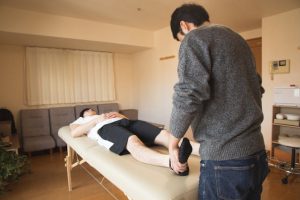- You should gradually return to physical activity to prevent re-injury and build strength safely.
- Maintain proper nutrition and rest to support your body’s recovery and healing processes.
- You should consider massage therapy to enhance circulation, reduce tension, and promote relaxation.
- Seek professional guidance and listen to your body’s needs throughout the recovery journey.
- You should stay positive and dedicated, celebrating each small recovery milestone along the way.
Being an athlete comes with its fair share of risks, one of them being the possibility of sustaining a severe injury. Whether it’s a torn ligament, a stress fracture, or a dislocated joint, recovering from a sports injury can be a long and challenging process. However, with the right mindset and approach, athletes can make a full recovery and get back to doing what they love. This blog will discuss essential tips for athletes to help them recover from a severe injury and get back on track.
Follow Your Healthcare Provider’s Recommendations
Your healthcare provider plays a crucial role in helping you recover from a severe injury. It’s essential to follow their recommendations and treatment plan closely in order to facilitate the healing process. This may include the following four:
Physical Therapy

Physical therapy is critical to recovering from a sports injury. A physical therapist can help you with exercises and stretches that will aid your recovery and prevent future injuries. Attending all scheduled physical therapy sessions and doing recommended at-home exercises is essential.
Medication
Your healthcare provider may prescribe medication to help manage pain and reduce inflammation. It’s essential to take these medications as prescribed and communicate any side effects or concerns with your doctor.
Surgery
In some cases, surgery may be necessary to repair a severe sports injury. If your healthcare provider recommends surgery, it’s essential to weigh the risks and benefits carefully and ask any questions you may have before proceeding. Recovery time may vary depending on the type of surgery and the individual’s healing process.
Heat and Ice Therapy
Applying heat and ice to the injured area can also help reduce pain and inflammation. Depending on your injury, your healthcare provider may recommend alternating between hot and cold therapy or using one type more often.
Following your healthcare provider’s recommendations can significantly improve your chances of full recovery and prevent further complications or re-injury. It’s important to communicate openly with your provider and ask any questions you may have about your treatment plan.
Listen to Your Body
One of the most important things you can do when recovering from an injury is to listen to your body. If something doesn’t feel right or you’re experiencing pain while trying to resume physical activity, it’s essential to stop and give your body time to heal. Pushing through the pain can lead to further damage and prolong your recovery time. Trust your instincts; don’t be afraid to speak up if something feels wrong.
Gradually Ease Back Into Physical Activity
Once your healthcare provider has cleared you to resume physical activity, it’s important not to rush back into things too quickly. Start slowly and gradually increase your workout intensity as your body becomes stronger and more resilient. This will help prevent re-injury and allow you to build strength and endurance over time. Remember that progress takes time, so be patient with yourself as you work towards regaining full fitness.
Focus On Nutrition and Rest
Proper nutrition is crucial in supporting the healing process after a severe injury. Ensure you get enough protein, vitamins, minerals, and hydration to fuel your body as it repairs itself. Adequate rest is essential for recovery, so prioritize sleep, relaxation, and physical activity. Consider working with a sports nutritionist or dietitian to create a personalized meal plan that meets your needs during recovery.
Try Massage Therapy

Massage therapy can be a beneficial addition to your recovery regimen. It can help improve circulation, reduce muscle tension and soreness, and promote relaxation. Be sure to choose a licensed massage therapist with experience with athletes and injury recovery. Communicate any areas of pain or discomfort so they can tailor the treatment to your specific needs.
Recovering from a severe injury is a journey that requires patience, dedication, and self-compassion. By gradually easing back into physical activity, focusing on nutrition and rest, and considering therapies such as massage, you can effectively support your body’s healing process.
Remember to seek guidance from healthcare professionals and listen to your body’s needs. With time and persistence, you can regain strength and return to the activities you love. Stay positive and committed to your recovery, and celebrate each milestone.
